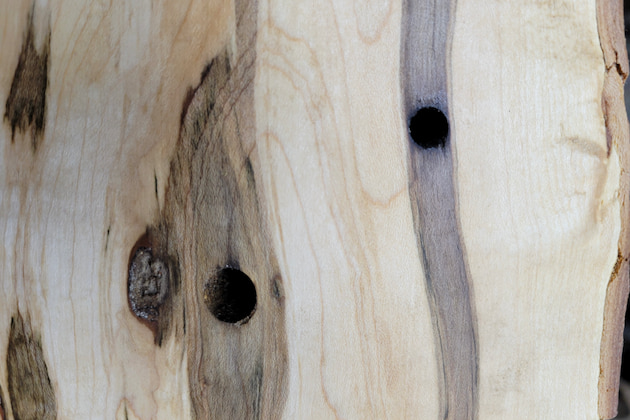Cornell Corner
Shrinking the taphole, does it impact production?
How do smaller diameter spouts perform?
By ADAM WILD, DIRECTOR CORNELL UNIVERSITY UIHLEIN MAPLE RESEARCH FOREST | DECEMBER 13, 2023
LAKE PLACID, N.Y.—For the past couple decades, 5/16-inch diameter tap holes have been the commercial maple industry standard since switching from 7/16 inch spouts.
Over the years, folks have experimented with even smaller diameter tap holes with mixed results.
More detailed research has shown that ¼ inch diameter tapholes yield 10% less than a 5/16 inch diameter tapholes (3rd Ed. North American Maple Syrup Producers Manuel) while many equipment catalogs and producers claim they get the same yield from ¼ inch diameter spouts or smaller.
So how do smaller diameter spouts perform? Having a smaller diameter spout has the potential of creating narrower compartmentalized wounds within a tree. This is beneficial for trees that have been tapped for many decades and trees located in marginal soils or short growing seasons.
During the maple season of 2022 and 2023 we tested the sap yield from 5/16 (0.3125) inch diameter tap holes, 1/4 (0.25) diameter tapholes and 9/40 (0.225) diameter tap holes at the Cornell University Uihlein Maple Research Forest in Lake Placid, NY.
The top of the sugarbush at the Uihlein Maple Research Forest is 2,300 feet in elevation and Lake Placid, NY is notorious for being a cold region with short growing seasons.
Being able to tap with a smaller diameter taphole and still maintain high yields would be ideal. Each tap hole diameter was replicated three times (4-19 taps per replicate) in 2022 and five times (4-20 trees per replicate) in 2023.
The 2022 maple season was above average for production at the Uihlein Maple Research Forest and the 2023 maple season was a below average production year with only a couple weeks of good sap flow data. Sap volume was collected from each replicate after each sap run.
Total sap volume across the season was averaged per tap/tree from each replicate. Production volume from the 5/16 inch diameter tapholes was considered 100% of production as the industry standard. The other two diameters are shown in percentage increases or decreases above or below the 5/16 inch diameter spouts.
During the two years of data collection, there was no significant difference between the three different tap hole diameters (figures 1 & 2). Although the 0.225 diameter spouts show a 12.5% increase in production during the 2022 season, there was no significant difference (figure 1).
Based on the error bars that show the standard deviation, the variation is high.
Quarter inch diameter spouts show similar production as the 5/16 inch diameter spouts in 2022. In 2023 both smaller diameter spouts had less production on average (15% less for 0.225 inch and 16% less for 1/4 inch diameter) than 5/16 inch diameter spouts although this was also not a significant difference.
Looking at the error bars, the variation is too large between the replications. It is important to note that the 2023 maple season in Lake Placid was a short season and the data only reflects two weeks of data but the bulk of production for that season.
Only two seasons of data is not fully conclusive as to whether smaller diameter tapholes provide similar yields to the current industry standard of 5/16 inches. Although after two years of data collection at the Cornell University Uihlein Maple Research Forest there does not appear to be a significant change in production.
The second year does lean towards less production. Larger diameter tap holes should in theory yield more sap. An advantage to smaller diameter tapholes is less surface area which could reduce micro vacuum leaks in high vacuum systems.
Even if smaller diameter tapholes produce less sap, this could potentially be beneficial in applications where trees are slower growing and decreasing wound potential would be more beneficial for the long-term sustainability of tapping the trees.
However more work is needed to better understand non-conductive wood formation from smaller diameter tap holes. We hope to measure sap production volume on the different tap hole diameters during the 2024 maple season as well. Stay tuned for an update next year.
Acknowledgement: The project was possible thanks to funding from the Northern New York Agriculture Development Program. Thanks to Keith Otto for assistance in research set up and data collection.


































